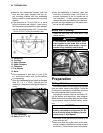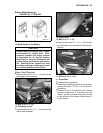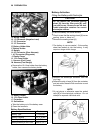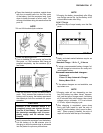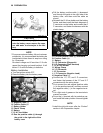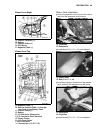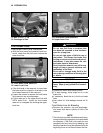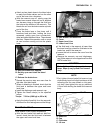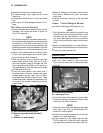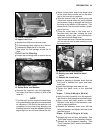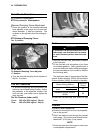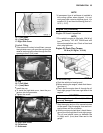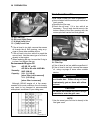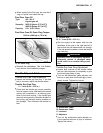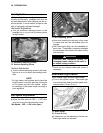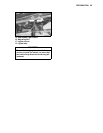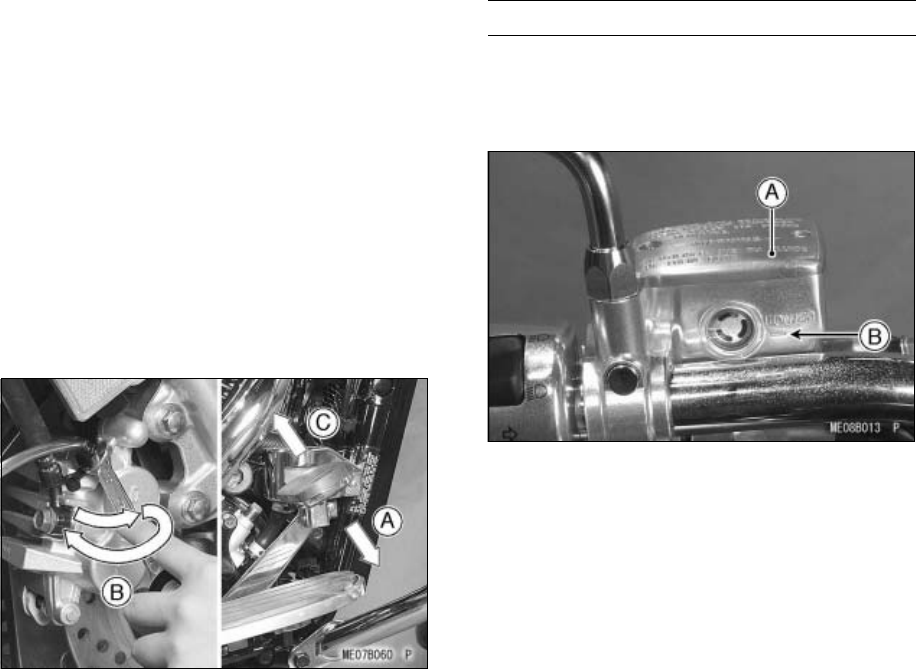
32 PREPA
RATION
•
Operate the brake lever several times.
•
If it feels spongy, there might be air in the
brake line.
•
If necessary, bleed the air in the rear brake
line.
•
Also check for fluid leakage around the fit-
tings.
Rear B
rake Line Air Bleeding
•
Remove the rear brake reservoir cap and di-
aphragm, and check that there is plenty of
flui
d in the reservoir.
NOTE
żThe fluid level must be checked several times,
during the bleeding operation and replenished
as necessary. If the fluid in the reservoir runs
completely out any time during bleeding, the
bleeding operation must be repeated from the
beginning since air will have entered the line.
•
Att
ach a clear plastic hose to the bleed valve
on the rear brake caliper and run the other
end of the hose into a container.
•
Wi
th the reservoir cap off, slowly pump the
brake pedal several times until no air bub-
bles can be seen rising up through the fluid
fr
om the holes at the bottom of the reservoir.
This bleeds the air from the rear brake master
cylinder end of the line.
•
P
ump the brake pedal a few times until it
becomes hard and then, holding the pedal
pushed down, quickly open (turn counter-
c
lockwise) and close the bleed valve. Then
release the pedal. Repeat this operation until
no more air can be seen coming out into the
plastic hose.
A. Hold the brake pedal applied.
B. Quickly open and close the bleed
valve.
C. Release the brake pedal.
•
When air bleeding is finished, check that the
fluid level is between the upper and lower
level lines.
•
Tighten the bleed valve(s) to the specified
torque.
Torque: 7.8 N·m (0.80 kgf·m, 69 in·lb)
•
Install the diaphragm and reservoir cap.
NOTE
żFirst, tighten the rear brake fluid reservoir cap
clockwise by hand until slight resistance is felt
indicating that the cap seated on the reser-
voir body, then tighten the cap an additional
1/6 turn while holding the brake fluid reservoir
body.
•
Apply the brake forcefully for a few seconds,
and check for fluid leakage around the fittings.
•
Install the cover with the bolt.
Clutch Fluid
Clutch Fluid Level Inspection
•
With the clutch reservoir held horizontal,
check that the fluid level is above the lower
level line.
A. Clutch Fluid Reservoir
B. Lower Level Line
•
If the fluid level in the reservoir is lower than
the lower level line, check for fluid leaks in the
clutch line and fill the reservoir.
NOTE
żSince the clutch fluid is the same as the brake
fluid, refer to the “Front or Rear Brake Fluid”
section for further details.
•
Loosen the screws to remove the clutch fluid
reservoir cap and diaphragm.
•
Fill the reservoir to the upper level line with
DOT4 clutch fluid. Inside the clutch reservoir
is a stepped line showing the upper level line.



